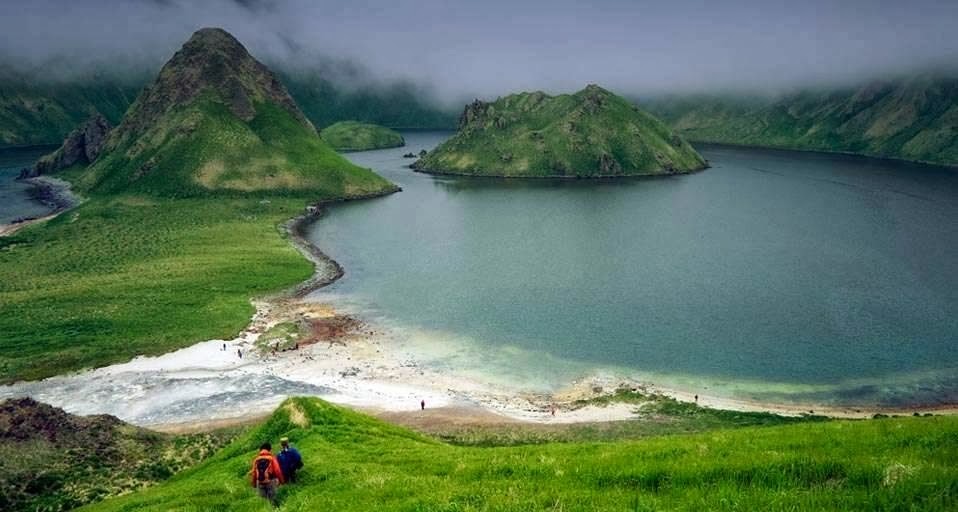Gulf of Mannar
Gulf of Mannar: With an average depth of 5.8 metres, the Gulf of Mannar is a sizable shallow harbour that is a part of the Laccadive Sea in the Indian Ocean. It is located in the Coromandel Coast region, halfway between Sri Lanka’s west coast and India’s southeast tip. The Gulf of Mannar is separated from Palk Bay, which is located to the north between India and Sri Lanka, by the group of low islands and reefs known as Ram Sethu, which contains Mannar Island. The Gulf is served by the estuaries of the Thamirabarani and Vaippar rivers in South India as well as the Malvathu Oya (Malvathu River) in Sri Lanka. Here, one can find dugongs, or sea cows.
What is Gulf of Mannar
The Gulf of Mannar is a large shallow bay located between the southeastern coast of India and the western coast of Sri Lanka. It is part of the Indian Ocean and is known for its rich biodiversity and unique ecosystem. Here are some key features and facts about the Gulf of Mannar:
Location: The Gulf of Mannar is situated in the Indian Ocean, covering an area of about 10,500 square kilometers (4,000 square miles). It is bordered by the southeastern coast of the Indian state of Tamil Nadu and the western coast of Sri Lanka.
Biodiversity: The Gulf of Mannar is renowned for its incredible marine biodiversity. It is home to a wide variety of marine species, including corals, fish, sea turtles, dolphins, and dugongs (sea cows). The region is particularly known for its vibrant coral reefs.
Marine Protected Area: To conserve the unique marine ecosystem of the Gulf of Mannar, a large portion of it has been declared a Marine Protected Area (MPA). This MPA includes the Gulf’s coral reefs, seagrass beds, and other critical habitats.
Coral Reefs: The coral reefs in the Gulf of Mannar are some of the healthiest and most diverse in the world. They are essential for maintaining the local marine ecosystem and providing a habitat for numerous species of fish and other marine life.
Dugong Sanctuary: The Gulf of Mannar is home to one of the world’s few remaining populations of dugongs, a threatened marine mammal. A portion of the Gulf has been designated as a Dugong Sanctuary to protect these gentle herbivorous creatures.
Ramsar Site: In 2005, the Gulf of Mannar was designated as a Ramsar Site, recognizing its international importance as a wetland ecosystem. This designation underscores the need for conservation efforts to protect its biodiversity.
Human Activities: The Gulf of Mannar is an important region for fishing and other economic activities for the local communities living along its shores. However, unsustainable fishing practices and habitat destruction have posed threats to its biodiversity.
Conservation Efforts: Efforts have been made to promote sustainable fishing practices, protect critical habitats, and raise awareness about the importance of preserving the Gulf of Mannar’s unique ecosystem.
In summary, the Gulf of Mannar is a biodiverse and ecologically significant region in the Indian Ocean, known for its coral reefs, marine life, and the conservation efforts aimed at protecting its fragile ecosystem.
Gulf of Mannar in Which State
The Ramanathpuram and Tuticorin districts of the Indian state of Tamil Nadu are home to the Gulf of Mannar Marine National Park. The main draw here is the coral reefs and marine life. The Park consists of 21 islands that are encircled by coral reef habitats and shallow water habitats that are home to distinctive marine biodiversity. Tourism and other related activities are prohibited on the 21 islands because they are all part of the Marine National Park.
Gulf of Mannar Biosphere Reserve
The 10,500 square kilometres of ocean, 21 islands, and nearby coastline that make up the Gulf of Mannar Biosphere Reserve are all included. The maritime ecosystems include seaweed communities, sea grass communities, coral reefs, salt marshes, and mangrove forests, while the islets and coastal buffer zone comprise beaches, estuaries, and tropical dry broadleaf forests. A worrisome trend of coral bleaching was discovered on the reefs of Mandapam, Kilakarai, and Palk Bay in May 2019 by the National Centre for Coastal Research, an organisation under the Indian Ministry of Earth Sciences with a field research station there. When the temperature rose to between 32 °C and 36 °C, researchers saw a pattern of coral bleaching.
Gulf of Mannar Marine National Park
One of Asia’s richest coastline areas is the Gulf of Mannar, which is situated at the southeast edge of the continent and is home to over 3,600 species of plants and animals. There are 117 or so hard coral species known to exist in the Gulf of Mannar. Sharks, dugongs, and dolphins are common visitors to the Gulf, as well as sea turtles. Nevertheless, the combined effects of 47 communities, with a combined population of over 50,000, have led to an issue with overharvesting of marine species. Acorn worm, pearl oyster, and gorgonian coral populations have all decreased along with fish populations.
Gulf of Mannar on Map (India) Photo
The Gulf of Mannar on Indian Map Photo is given below.

Map of Gulf of Mannar
Gulf of Mannar is Famous for?
Gulf of Mannar Marine National Park’s geography. Species that predominate in the Gulf of Mannar Marine National Park. the Gulf of Mannar Marine National Park’s location. The park has a total area of 6.23 sq. Km. In the year 1980, it was founded. The coral reefs that surround the islands are rich in marine life and host a variety of stunning decorative fish. The reefs are so beautiful and abundant that they are frequently referred to as an “Underwater Tropical Rain Forest.” The months of October through March are the ideal times of year to explore the Gulf of Mannar Marine National Park.
Mannar Sea
“Mannar,” which is a place rather than a sea. Mannar is a town located in the Northern Province of Sri Lanka, and it is known for its proximity to the Gulf of Mannar, which is a large bay of the Indian Ocean. The Gulf of Mannar is significant for its biodiversity and marine life, and it has been declared a biosphere reserve by UNESCO.
The Gulf of Mannar is home to a variety of marine species, including coral reefs, seagrass beds, and numerous fish species. It is an ecologically important area for conservation efforts and supports the livelihoods of many local communities who rely on its resources.
If you were looking for information about a specific sea or had a different question in mind, please provide more details, and I’ll be happy to help further.









 CLAT Result 2026 Out, Download Scorecard...
CLAT Result 2026 Out, Download Scorecard...
 CLAT Topper List 2026 Released with Rank...
CLAT Topper List 2026 Released with Rank...
 When Will NEET 2026 Registration Start? ...
When Will NEET 2026 Registration Start? ...














